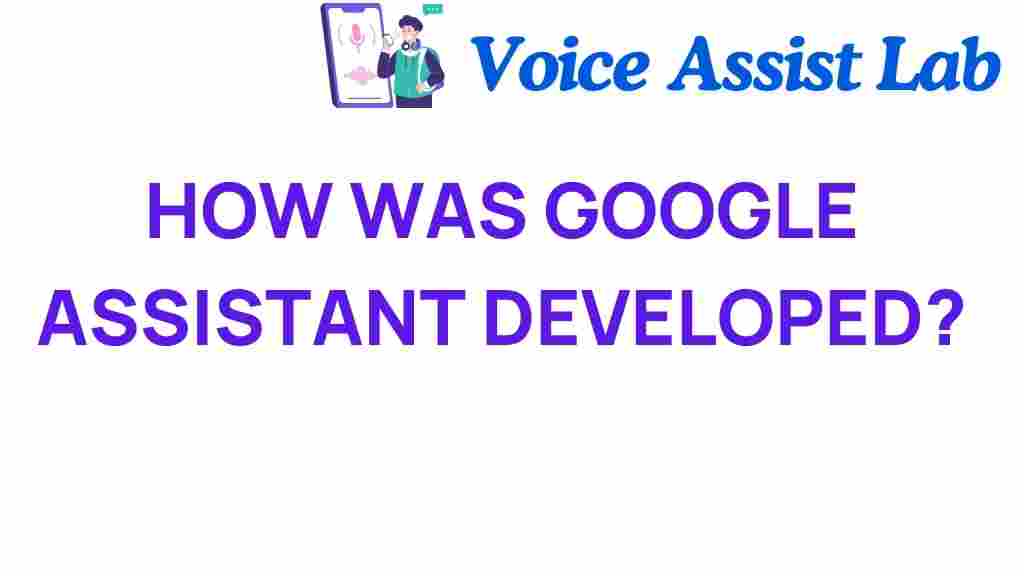Unveiling the Origins: How Google Assistant was Developed
In the rapidly evolving landscape of AI development and voice technology, few innovations have had as profound an effect as Google Assistant. Launched in 2016, this digital assistant has transformed the way users interact with their devices and access information. In this article, we will delve into the fascinating history of Google Assistant’s development, exploring its roots in machine learning, natural language processing, and user experience design.
The Birth of Google Assistant
The story of Google Assistant begins with the introduction of Google Now in 2012. This was one of the first attempts by Google to provide users with proactive information based on their preferences and behaviors. Google Now utilized a card-based interface to present users with relevant content, but it lacked the conversational capabilities that would later define Google Assistant.
In 2015, Google announced a significant shift towards a more interactive and intelligent assistant. This was when Google Assistant was officially unveiled at the Google I/O developer conference, marking a new era in digital assistants. Built on the advancements in AI development and machine learning, Google Assistant was designed to engage users in a natural and conversational manner.
Key Technologies Behind Google Assistant
The development of Google Assistant is rooted in several critical technologies:
- Natural Language Processing (NLP): This technology allows Google Assistant to understand and interpret user queries in a way that mimics human conversation. NLP is essential for creating a responsive and intuitive user experience.
- Machine Learning: Google Assistant leverages machine learning algorithms to improve its responses over time. By analyzing user interactions and feedback, the assistant becomes smarter and more efficient.
- Voice Recognition: The ability to accurately recognize and process voice commands is crucial for any digital assistant. Google Assistant utilizes advanced voice recognition technologies to ensure high accuracy and reliability.
Innovative Features of Google Assistant
One of the most remarkable aspects of Google Assistant is its wide array of features designed to enhance user experience. Some of these include:
- Contextual Awareness: Google Assistant can remember previous interactions and context, allowing for more fluid conversations.
- Integration with Smart Devices: Google Assistant can control various smart home devices, making it a central hub for home automation.
- Multi-Tasking Capabilities: Users can ask Google Assistant to perform multiple tasks in a single command, showcasing its advanced understanding of language.
Step-by-Step Evolution of Google Assistant
The evolution of Google Assistant has been a multi-step process, incorporating user feedback and technological advancements:
- Initial Development (2012-2015): The groundwork for Google Assistant was laid with the introduction of Google Now, which focused on providing information rather than engaging users in conversation.
- Launch of Google Assistant (2016): Google Assistant was launched with a focus on natural conversations, allowing users to interact more naturally with their devices.
- Continuous Updates (2016-Present): Since its launch, Google Assistant has undergone numerous updates, introducing new features and enhancing existing ones based on user feedback.
Challenges in Development
Despite its success, the development of Google Assistant was not without challenges. Some of the key hurdles included:
- Understanding Diverse Accents: One of the significant challenges was ensuring that Google Assistant could accurately understand various accents and dialects.
- Privacy Concerns: As with any digital assistant, user privacy was a major concern. Google had to implement robust security measures to protect user data.
- Maintaining Context: Ensuring that the assistant could maintain context across multiple interactions required complex algorithms and ongoing refinement.
Troubleshooting Tips for Google Assistant
Users may occasionally encounter issues while using Google Assistant. Here are some troubleshooting tips to enhance the user experience:
- Check Internet Connection: Ensure that your device is connected to the internet, as Google Assistant requires online access to function optimally.
- Update the App: Keeping the Google Assistant app updated ensures you have the latest features and bug fixes.
- Adjust Voice Settings: If Google Assistant is not responding accurately, check the voice settings and retrain the voice model if necessary.
The Future of Google Assistant
Looking ahead, the future of Google Assistant appears promising. As AI development continues to advance, we can expect:
- Improved Personalization: Future iterations may offer even more personalized experiences based on user preferences and habits.
- Enhanced Integration: With more smart home devices becoming available, Google Assistant’s integration capabilities are likely to expand further.
- Richer Contextual Understanding: Ongoing advancements in natural language processing and machine learning will enable Google Assistant to understand and respond to complex queries with greater accuracy.
Conclusion
In conclusion, the development of Google Assistant represents a significant milestone in the history of digital assistants. By blending machine learning, natural language processing, and user-centered design, Google has created a tool that not only enhances user experience but also sets the standard for future innovations in voice technology. As we continue to embrace these advancements, Google Assistant is likely to evolve, becoming an even more integral part of our daily lives.
For more insights into the impact of AI development on technology, visit this resource. Join us as we continue to explore the ever-changing world of digital assistants and their place in tech history.
This article is in the category Innovations and created by VoiceAssistLab Team
